How to Open Adobe Creative Cloud on Mac
Our Verdict
If you're looking for the best cloud storage platform for all your files, then it's not Adobe Creative Cloud, despite the suite's fantastic cloud syncing features.
For
- Great cloud-sync capabilities
- Integrations with all other Adobe apps
Against
- Expensive
- No support for Apple file formats
Creative Bloq Verdict
If you're looking for the best cloud storage platform for all your files, then it's not Adobe Creative Cloud, despite the suite's fantastic cloud syncing features.
Pros
- + Great cloud-sync capabilities
- + Integrations with all other Adobe apps
Cons
- - Expensive
- - No support for Apple file formats
Most creatives are familiar with the Adobe Creative Cloud suite and know how powerful and essential it can be in creative industries. However, not everyone will be familiar with the cloud storage components of the platform.
The good news is that, in recent years, Adobe has come a long way in developing its cloud storage and cloud sync technologies. This might have you considering whether Adobe's cloud storage features can rival the best cloud storage platforms, like Google Drive and Apple iCloud.
This is precisely the question we're going to answer in this Adobe Creative Cloud review, in which we consider whether it can fulfil the role of primary cloud storage or whether it is best used alongside another platform.
Adobe Creative Cloud storage: Plans and pricing
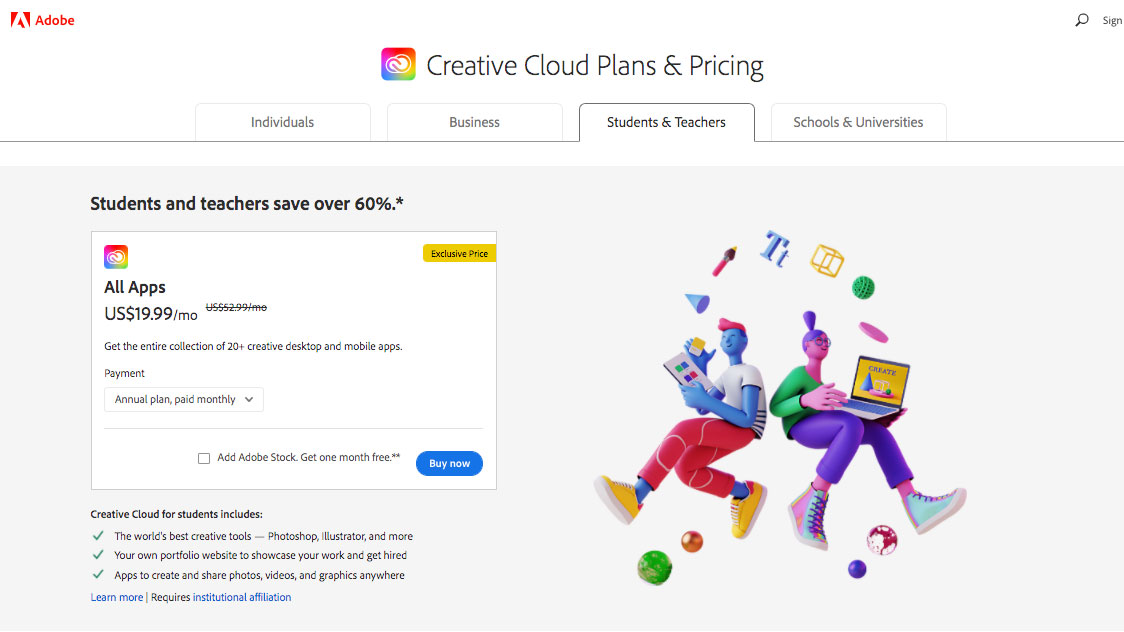
Although the Adobe Suite is quite expensive, we think it's well worth it if you're studying or working in a creative industry.
The most affordable way to access Adobe Creative Cloud is as a student. If you're enrolled in an eligible institution, you can access the full Adobe suite for only $19.99 / £16.24 per month for the entire period of your studies.
Individuals who are not studying can purchase Adobe Creative Cloud for $52.99 per month, although there are often offers available, see our Adobe Creative Cloud discount page for the latest offers.
All student and individual plans provide users with 100GB of cloud storage, although we don't think this will be sufficient if you plan on using Adobe Creative Cloud as your primary storage destination.
Fortunately, it is possible to upgrade your storage allowance through your Adobe ID account page. It costs $2.99 per month for an extra 20GB, which is poor value for money. The website also says you can expand to up to 1TB, but we could find no further information or pricing details.
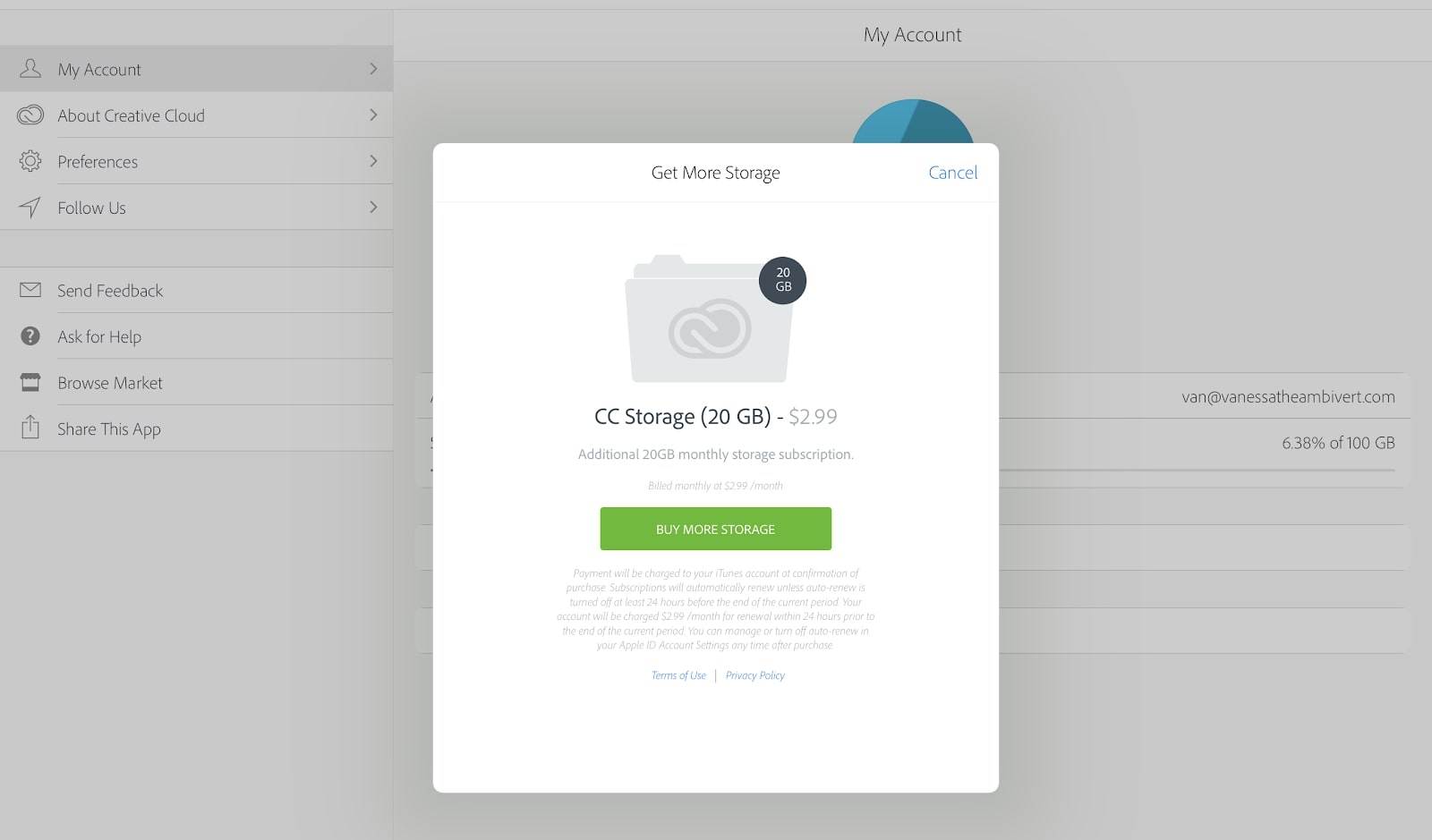
Finally, businesses can purchase the suite for $79.99 per user per month. Although this is very expensive, you gain access to the web-based admin console and advanced administrator analytics. Each user also receives 1TB of storage space.
Adobe is the best-in-class suite for creatives, which somewhat justifies its intimidating price tag. If you're looking for a more affordable competitor, we recommend Affinity's suite that includes Designer, Photo, and Publisher. A lifetime purchase of each app costs only $34.99. These apps aren't quite as powerful as Adobe's but they're definitely better value. Then you could pair files from these apps to automatically back up to cloud storage from a platform like Google Drive, which offers 200 GB for $29.99 per year. If you need a lot of space, consider a 5TB plan from iDrive, which costs just $79.50 per year.
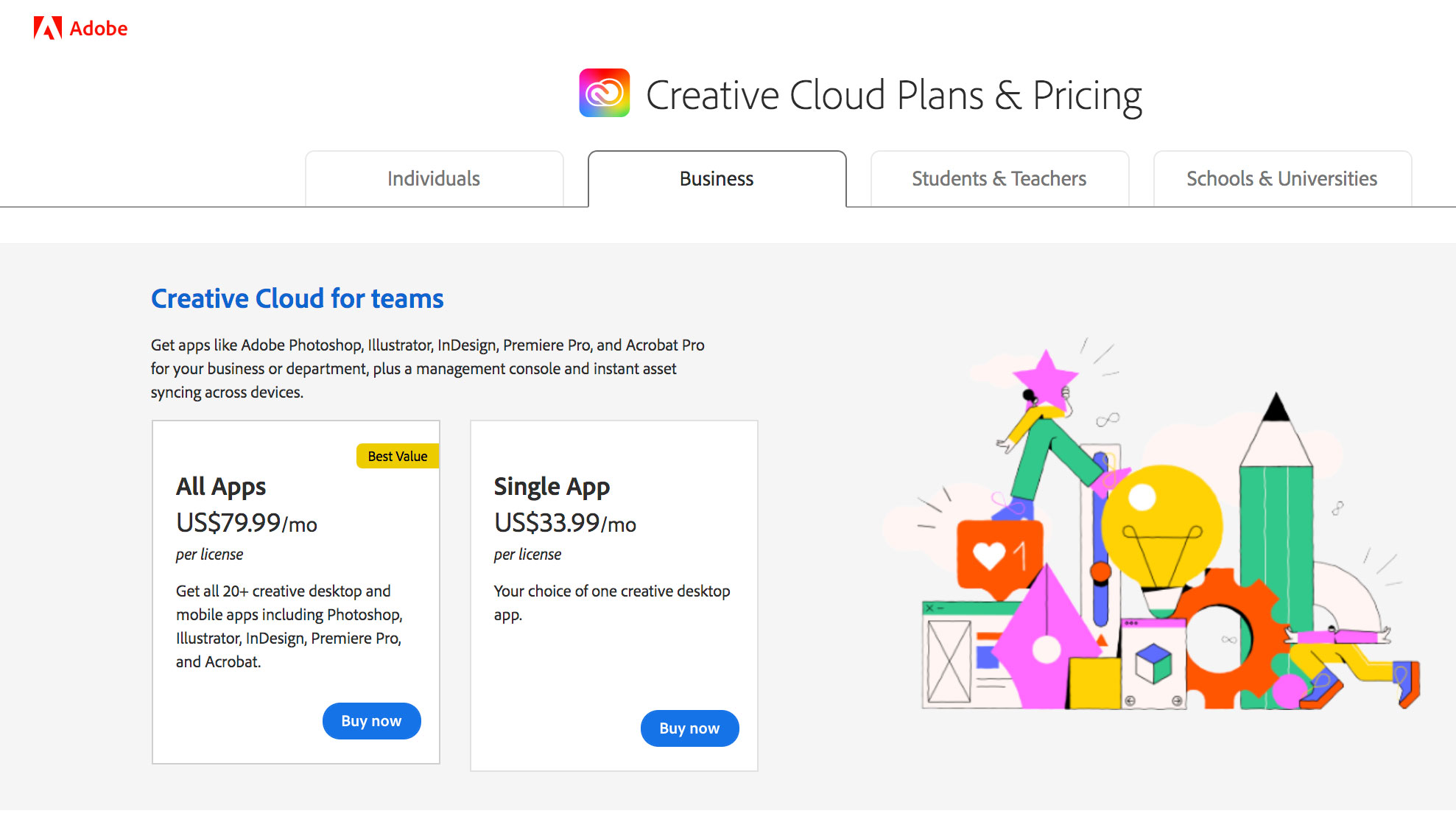
Adobe Creative Cloud storage: Features
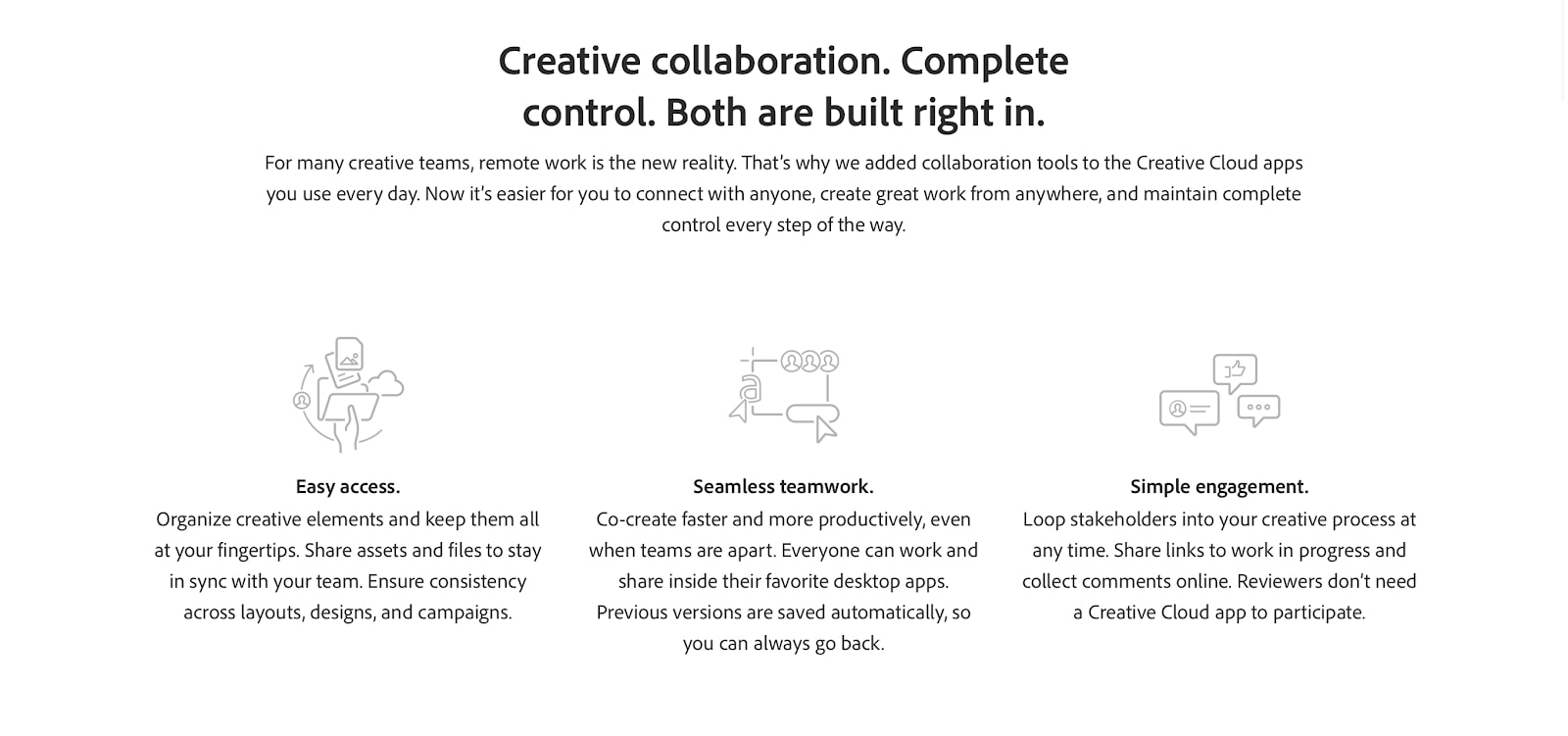
Adobe Creative Cloud doesn't have many innovative cloud storage features, which is one of the main reasons we don't think it's the most suitable platform for all your files. Collaborative functionalities, however, are a key strength.
One of Adobe Creative Cloud's flagship features is its cloud syncing technology, which enables users to collaborate with colleagues or friends across platforms in real-time. As long as you're connected to the internet, your files will automatically update and sync across all your devices, ensuring you're not caught out with no access to an important document at a crucial moment.
Creative collaboration tools also enable users to provide feedback on other people's documents and share invite links with anyone, no matter whether they use Adobe Creative Cloud or not.
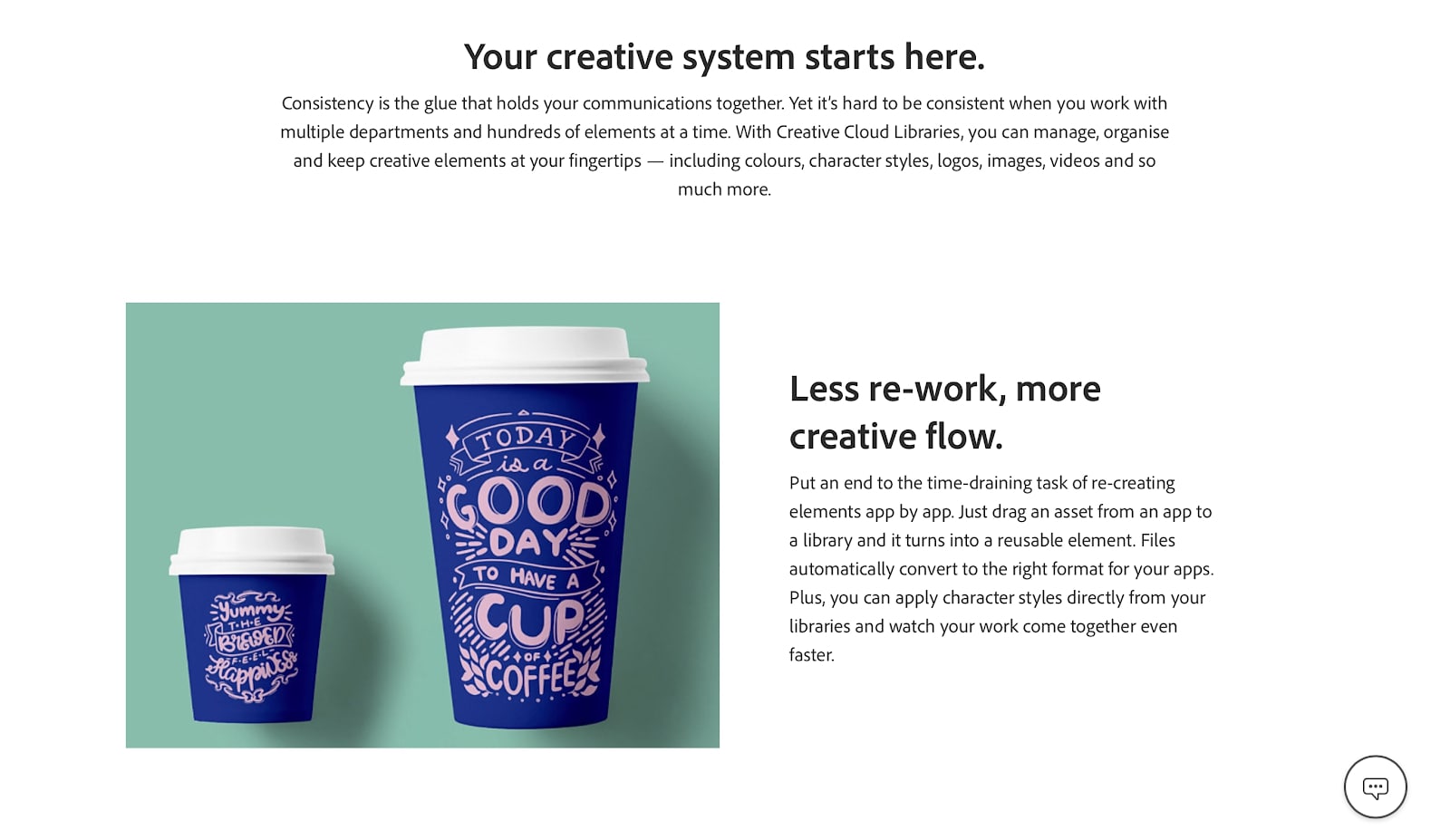
For businesses working in creative industries, or even students working in groups, sharing and reusing design elements can be a pain. Redesigning or manually sending each individual element in a project is time-consuming and frustrating.
Fortunately, Adobe Creative Cloud Libraries enables users to store an unlimited number of elements where team members and colleagues can easily access them. The drag-and-drop interface is built right into the Adobe Creative Cloud interface, so it's painless and straightforward to use.
Adobe Creative Cloud storage: Interface

The Adobe Creative Cloud app (where files are managed) isn't built for managing large numbers of files external to the Adobe suite. In fact, it doesn't support Apple file types at all. So if you regularly work on apps such as Pages, Numbers or Keynote, you'll need to find somewhere else to store those files. File upload size is also limited to only 1GB on the web, or 5GB on a desktop app.
It also just isn't as powerful as most cloud storage providers, something you only notice after using the platform for several days. Upload and download speeds are both slower than comparable platforms using the same network, and the app is less responsive than we would like.
We were also frustrated by the lack of thumbnails when viewing files and the limited range of apps available on iPadOS. Additionally, the ever-present top menu bar proves the platform is first and foremost an editing suite, and not a cloud storage destination.
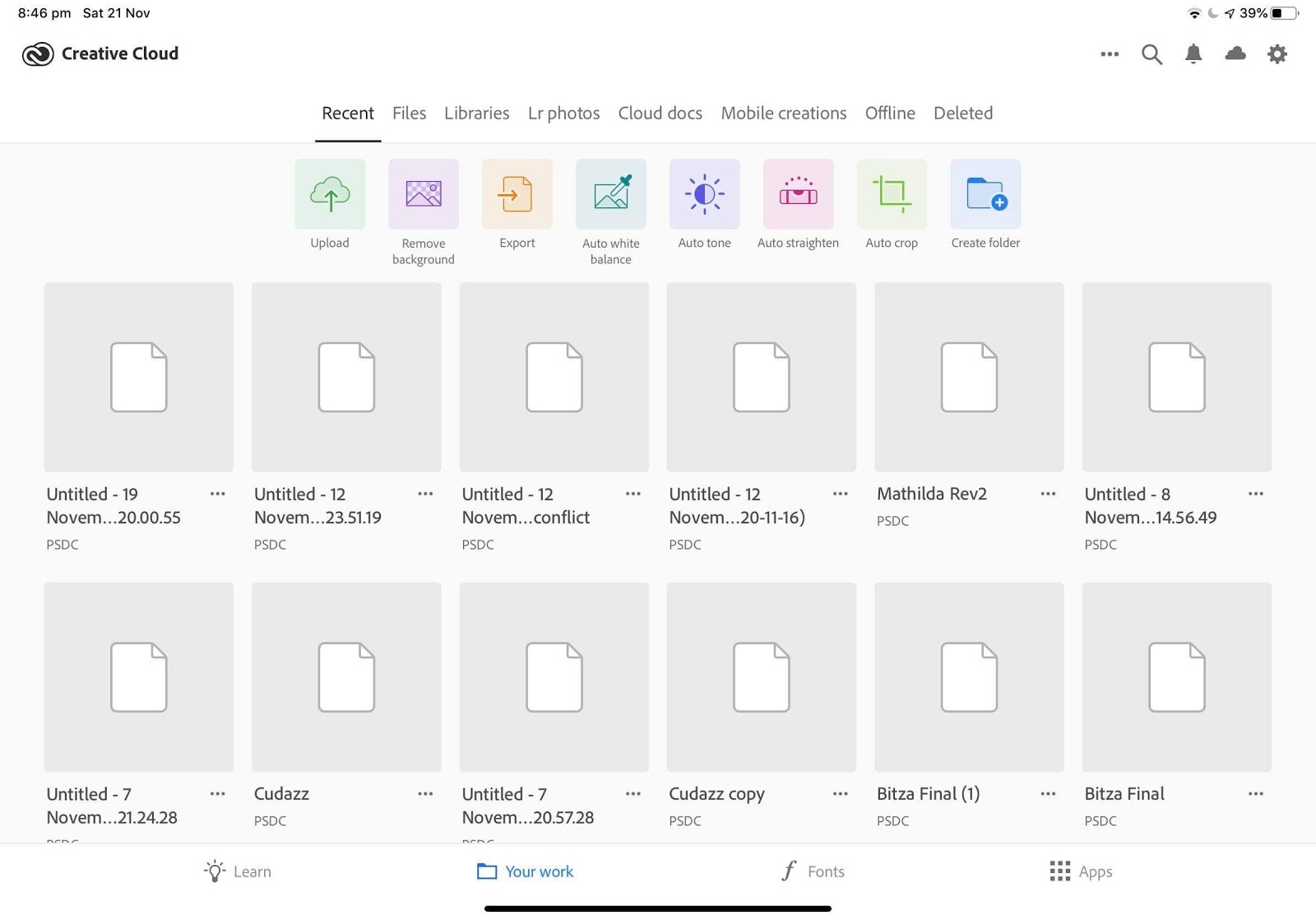
However, the Adobe Creative Cloud app is, as we've already outlined, great at managing cloud syncing. It is designed to help organize your works in progress and all the individual elements you might need. When used for this purpose, we've experienced no major performance issues.
Adobe Creative Cloud storage: Security

The most important thing to know about security is that all Adobe Creative Cloud data is hosted by Amazon Web Services in data centers in the EU, the US, and the Asia-Pacific region. Amazon Web Services is one of the leading data hosting companies globally, so you can be confident your data is secure.
Many creatives will also be familiar with encryption, which is a process that makes data indecipherable to unauthorised persons. With Adobe, all your data is encrypted in transit, making it very secure. We would, however, like to see data encryption for at-rest files in the future.
Adobe Creative Cloud storage: Support

Adobe provides all users access to a dedicated support site, Adobe Creative Cloud Learn and Support. This site enables you to access tutorials, user guides and community forums.
Users can search for help by app, making it easier to find exactly the right advice for the app you're using. And for more complex issues, there is always the option of submitting an online query or calling the Adobe support team during business hours.
Is Adobe Creative Cloud the right place to store all my files?
No, we don't think Adobe Creative Cloud is the right place to store all your files. The suite's intention is not to replace your primary cloud storage platform but to complement it.
However, don't let this deter you from investing in the Adobe suite. If you're a creative looking for a design suite with best-in-class cloud sync technology, Adobe Creative Cloud is right for you. We just recommend storing your archived files on a traditional cloud storage platform such as Google Drive, Microsoft OneDrive or Apple iCloud.
Read more:
- The best cloud storage for photos and videos
- What is cloud storage?
- The best cloud storage for business
Adobe Creative Cloud
If you're looking for the best cloud storage platform for all your files, then it's not Adobe Creative Cloud, despite the suite's fantastic cloud syncing features.
How to Open Adobe Creative Cloud on Mac
Source: https://www.creativebloq.com/reviews/adobe-cc-storage
0 Response to "How to Open Adobe Creative Cloud on Mac"
Post a Comment